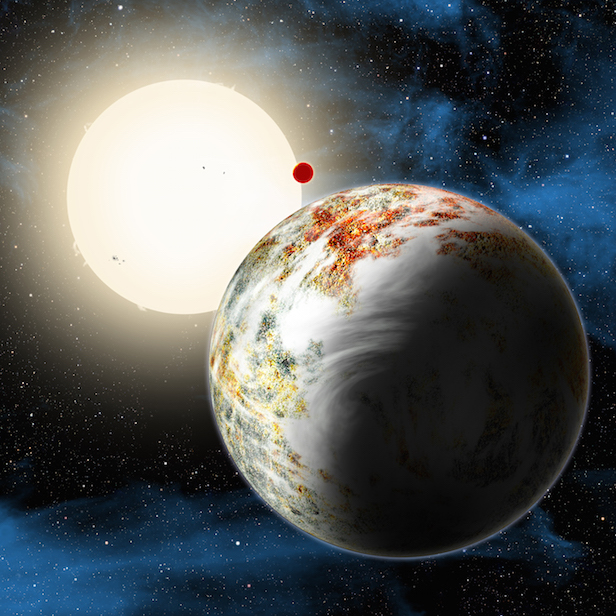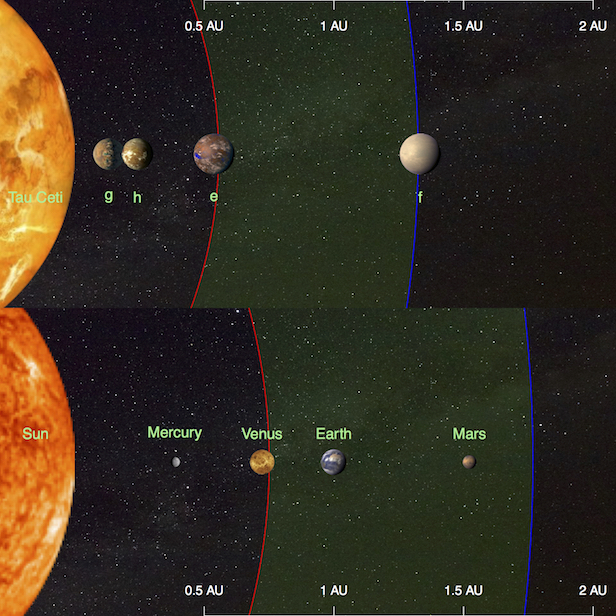Two potentially habitable planets discovered just 12 light years away
Four exoplanets have been discovered orbiting Sun-like star tau Ceti, two of them are super-Earths residing in the Goldilocks zone
 Two possible habitable planets have recently been discovered around the star tau Ceti, just twelve light years away. There are four exoplanet in total, however half of them lie in the star’s ‘Goldilocks zone’, making it theoretically possible for liquid water to exist on the surface. The lowest mass among the four is 1.7 times the mass of our Earth.
Two possible habitable planets have recently been discovered around the star tau Ceti, just twelve light years away. There are four exoplanet in total, however half of them lie in the star’s ‘Goldilocks zone’, making it theoretically possible for liquid water to exist on the surface. The lowest mass among the four is 1.7 times the mass of our Earth.
Although these planets could be potentially exciting targets, the researchers always stated that the habitability is unlikely. This is due to the fact that there is a massive debris disc around the star, which would lead to a heavy number of bombardments by comets and asteroids.
These planets were discovered via the ‘radial velocity’ method, with data obtained using the HARPS spectrograph at La Silla Observatory, Chile and the HIRES spectrograph at the Keck Observatory in Hawaii. By measuring the ‘wobble’ on tau Ceti caused by the planets, the team of astronomers at Hertfordshire University were able to detect the four Earth-sized planets. As tau Ceti is a Sun-like star, this means the outer limit for the habitable zone, and the outer exoplanet, is about the same distance between Mars and the Sun.

The two habitable super-Earths around tau Ceti, compared to our Solar System. Image credit: University of Hertfordshire
In 2013, a team of researchers investigated tau Ceti, with Hertfordshire University’s Dr Mikko Toumi developing a more precise data analysis technique that could differentiate between the signal caused by planets and those caused by a star’s activity.
“We realised that we could see how the star’s activity differed at different wavelengths and use that information to separate this activity from signals of planets,” says Tuomi. “Since then we’ve painstakingly improved the sensitivity of our techniques and could rule out two of the signals our team identified in 2013 as planets. Yet no matter how we look at the star, there seems to be at least four rocky planets orbiting it.
“We’re slowly learning to tell the difference between wobbles caused by planets and those caused by stellar active surface,” continues Tuomi. “This has enabled us to verify the existence of the two outer, potentially habitable, planets in the system.”
Dr Fabi Feng, a research fellow at the University of Hertfordshire, says: “We’re getting tantalisingly close to observing the correct limits required for detecting Earth-like planets. Our detection of such weak wobbles is a milestone in the search for Earth analogues and the understanding of the Earth’s habitability through comparison with these.”
Keep up to date with the latest space news in All About Space – available every month for just £4.99. Alternatively you can subscribe here for a fraction of the price!




